SS - MUSCLES OF ARTICULATION
1/9
There's no tags or description
Looks like no tags are added yet.
Name | Mastery | Learn | Test | Matching | Spaced |
|---|
No study sessions yet.
10 Terms
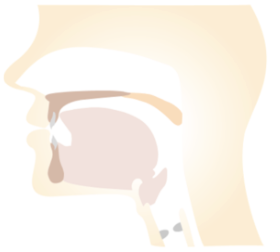
/d/
DRAWING | POSITION OF LIPS | POSITION OF TONGUE | POSITION OF SOFT PALATE |
Alveolar Plosive | Lips are parted and relaxed. | Tip of the tongue blocks air at the alveolar ridge | Soft palate is raised, blocking off the nasal cavity. Air passes through the oral cavity |
Complete block formed by the tongue on alveolar ridge. Pressure builds up behind the tongue as the nasal cavity is blocked. When the tongue is lowered, the burst of air produces a plosive sound | Muscles performing this action:
| Muscles performing this action:
| Muscles performing this action:
|
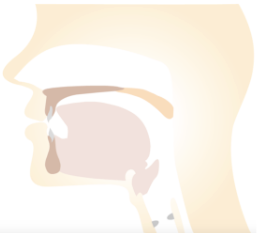
/t/
Alveolar Plosive | Lips are parted and relaxed. | Tip of the tongue blocks air at the alveolar ridge | Soft palate is raised, blocking off the nasal cavity. Air passes through the oral cavity |
Compete block formed by the tip of the tongue on alveolar ridge. Pressure builds up behind the tongue as the nasal cavity is blocked. When the tongue is lowered, the burst of air produces a plosive sound | Muscles performing this action:
| Muscles performing this action:
| Muscles performing this action:
|
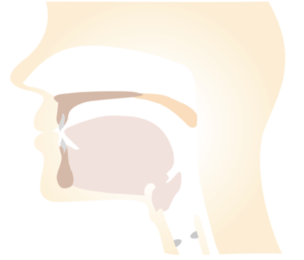
/p/
Bilabial Plosive | Lips are closed. Bilabial | Neutral | Soft palate is raised, blocking off the nasal cavity. Air passes through the oral cavity |
Complete block formed by closed lips. Pressure builds up behind the lips as the nasal cavity is blocked. When the lips are opened, the burst of air produces a plosive sound. | Muscles performing this action:
| Muscles performing this action:
|
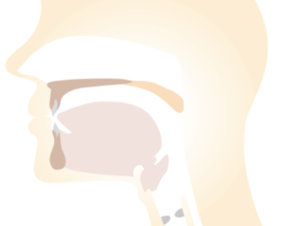
/b/
Bilabial Plosive | Lips are closed. Bilabial | Neutral | Soft palate is raised, blocking off the nasal cavity. Air passes through the oral cavity |
Compete block formed by closed lips. Pressure builds up lips as the nasal cavity is blocked. When the lips are opened the burst of air produces a plosive sound | Muscles performing this action:
| Muscles performing this action:
|
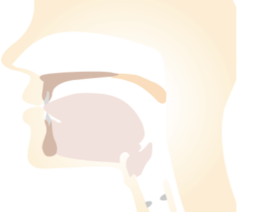
/th/
Dental Fricative | Lips are parted and relaxed. | Tongue tip to just below teeth. | Soft palate is raised, blocking off the nasal cavity. Air passes through the oral cavity |
Raised tongue tip does not completely block air passing between tongue and teeth. Turbulent airflow results. | Muscles performing this action:
| Muscles performing this action:
| Muscles performing this action:
|
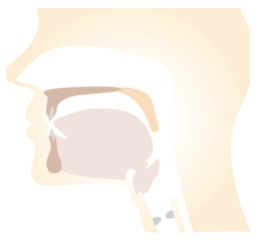
/m/
Bilabial Nasal | Lips are closed. Bilabial | Neutral | Soft palate is lowered so that air is free to pass through the nose. At the same time, air is blocked from leaving the oral cavity by the closed lips. |
Soft palate is lowered so that air is free to pass through the nose. At the same time, air is blocked from leaving the oral cavity by the lips. | Muscles performing this action:
| Muscles performing this action:
|
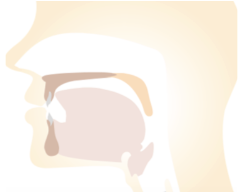
/n/
Alveolar Nasal | Lips are parted and relaxed. | Tongue tip or blade to alveolar ridge. | Soft palate is lowered so that air is free to pass through the nose. At the same time, air is blocked from leaving the oral cavity by the closed lips. |
Soft palate is lowered so that air is free to pass through the nose. At the same time, air is blocked from leaving the oral cavity by the tongue. | Muscles performing this action:
| Muscles performing this action:
| Muscles performing this action:
|

/k/
Velar Plosive | Lips are parted and relaxed. | Velar - back of tongue to soft palate | Soft palate is raised, blocking off the nasal cavity. Air passes through the oral cavity |
Complete block formed by the tongue at back of the soft palate. Pressure builds up behind the tongue as the nasal cavity is blocked. When the tongue is lowered, the burst of air produces a plosive sound. | Muscles performing this action:
| Muscles performing this action:
| Muscles performing this action:
|
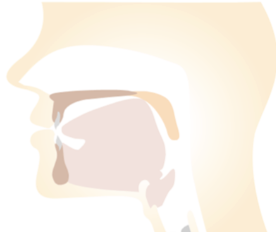
/ng/
Velar Nasal | Lips are parted and relaxed. | Velar - Back of tongue to soft palate | Soft palate is lowered so that air is free to pass through the nose. At the same time, air is blocked from leaving the oral cavity by the closed lips. |
Soft palate is lowered so that air is free to pass through the nose. At the same time, air is blocked from leaving the oral cavity by the tongue on the hard palate/soft palate | Muscles performing this action:
| Muscles performing this action:
| Muscles performing this action:
|
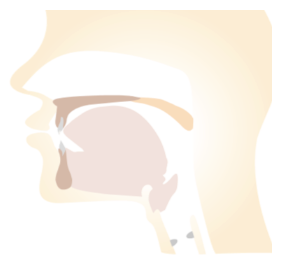
/sh/
Post-alveolar Fricative | Lips are protruded | Tip and blade to sides of palate and teeth | Soft palate is raised, blocking off the nasal cavity. Air passes through the oral cavity |
Raised tongue does not completely block air passing between tongue and roof of mouth. Turbulent airflow results | Muscles performing this action:
| Muscles performing this action:
| Muscles performing this action:
|